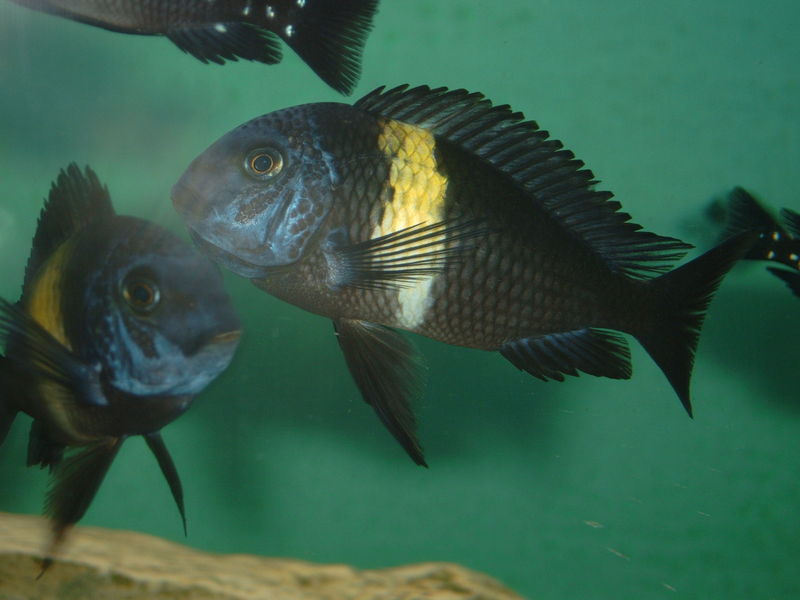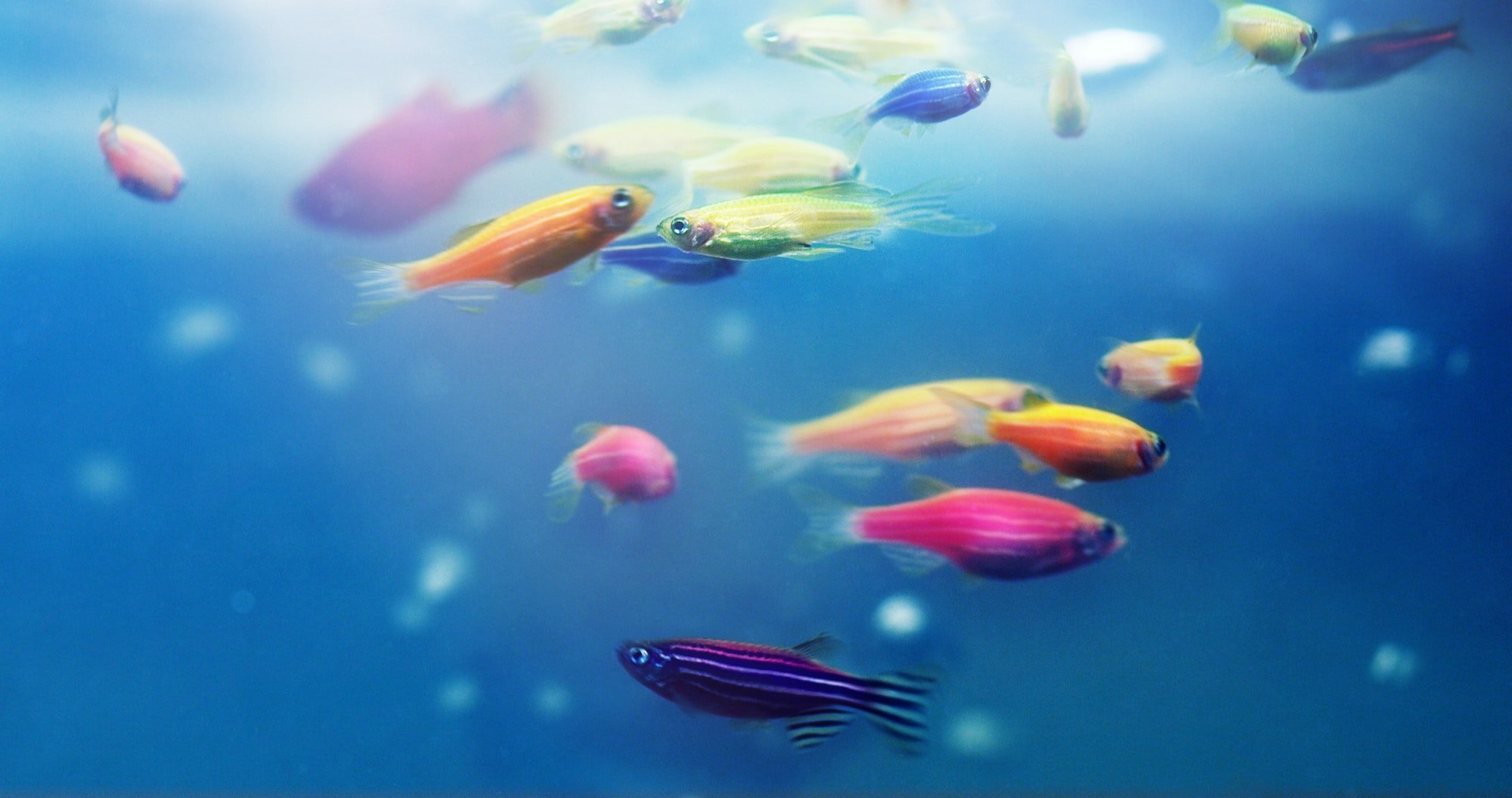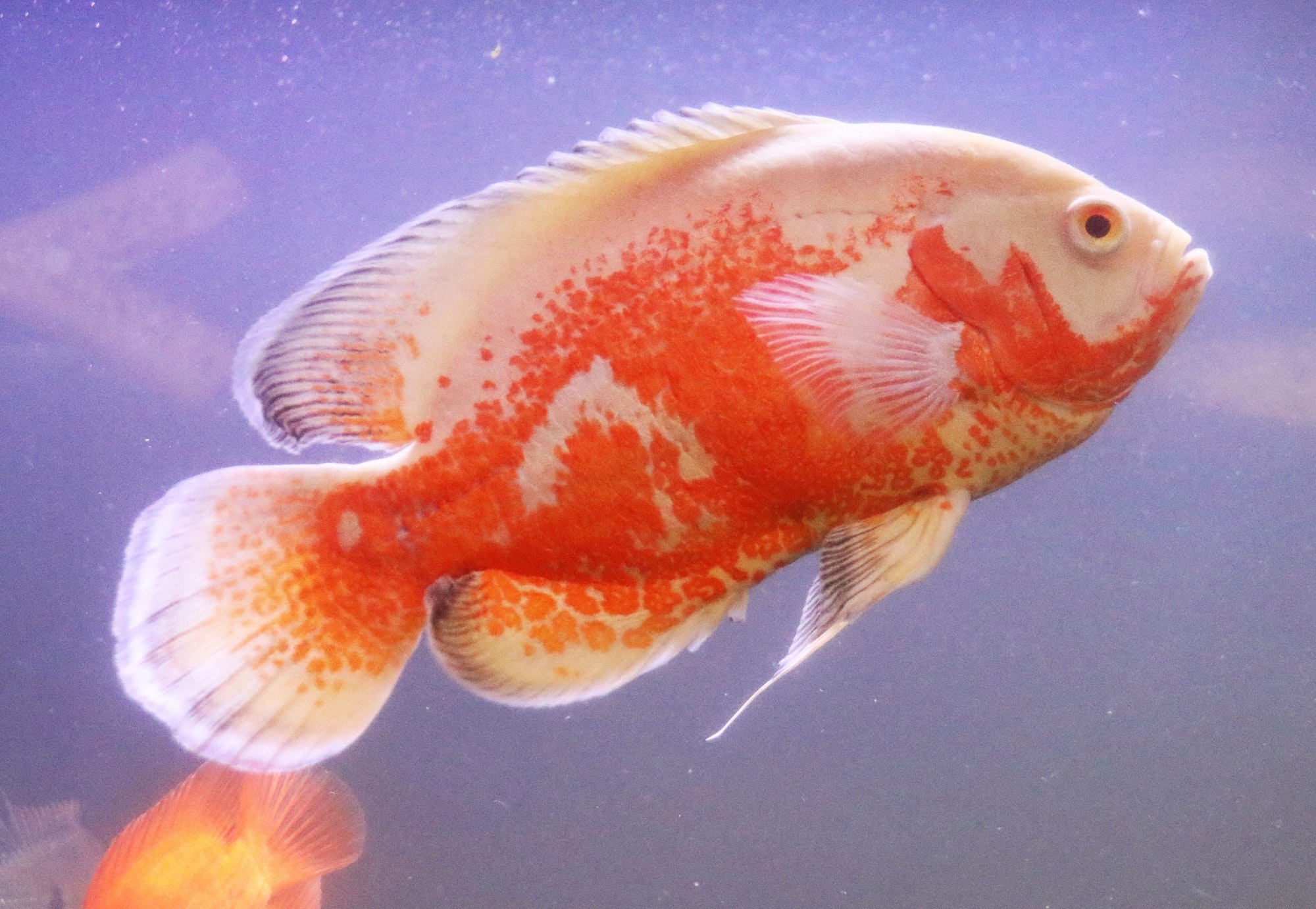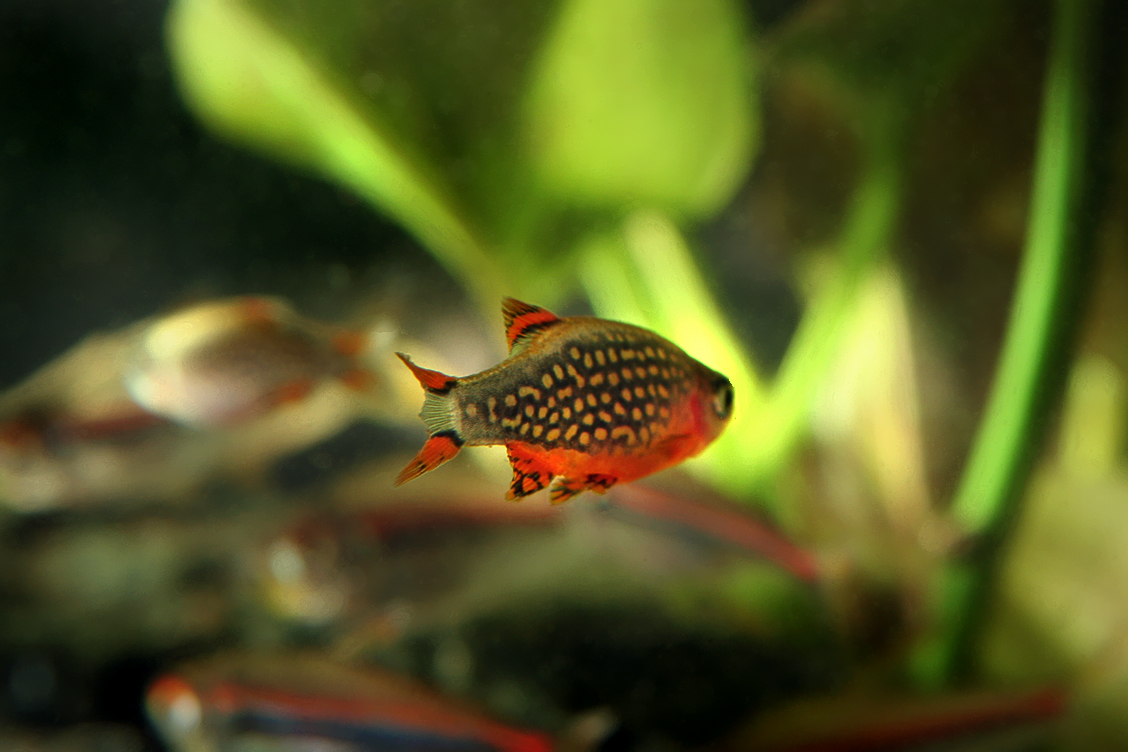The Angular Dwarf Crayfish, scientifically known as Cambarellus lesliei, is a fascinating little crustacean that calls the waters of Alabama and Mississippi home. This pint-sized crayfish belongs to the Cambaridae family, which includes many of its crayfish cousins. What makes this critter so special? Well, for starters, it’s one of the smallest crayfish species around, barely growing larger than your thumb!
Table of Contents
These tiny creatures have a knack for hiding in submerged plants in slow-moving or still waters. They’re bottom-dwellers, scurrying along the riverbed in search of tasty morsels. Like many crayfish, they’re not picky eaters and will munch on just about anything they can find, from plant matter to small insects and even leftover fish food.
The name Cambarellus lesliei might sound fancy, but it’s pretty straightforward. Cambarellus means “little crayfish” in Latin, while lesliei is likely named after a person, possibly the scientist who first discovered or described the species.
In the aquarium trade, you might hear these little guys called “Angular Dwarf Crawfish” or simply “Dwarf Crayfish”. They’re not as common in pet stores as their Mexican cousins, but they’re just as charming.
One cool thing about these crayfish is their molting process. Like all crustaceans, they have to shed their exoskeleton to grow. During this time, they’re completely defenseless and will hide until their new shell hardens. It’s like they’re getting a whole new suit of armor!
While there isn’t a ton of scientific research specifically on C. lesliei, studies on related species have shown that these little crayfish can be quite hardy. They can tolerate a range of water conditions, making them adaptable to different environments.
Interestingly, the Angular Dwarf Crayfish is listed as vulnerable by NatureServe. This is because they have a limited range and face threats from pollution and habitat disturbance in their native waters. It’s a reminder of how important it is to protect our waterways and the unique creatures that call them home.
So next time you’re near a slow-moving stream in Alabama or Mississippi, keep an eye out for these tiny, fascinating crustaceans. They might be small, but they play a big role in their aquatic ecosystem!
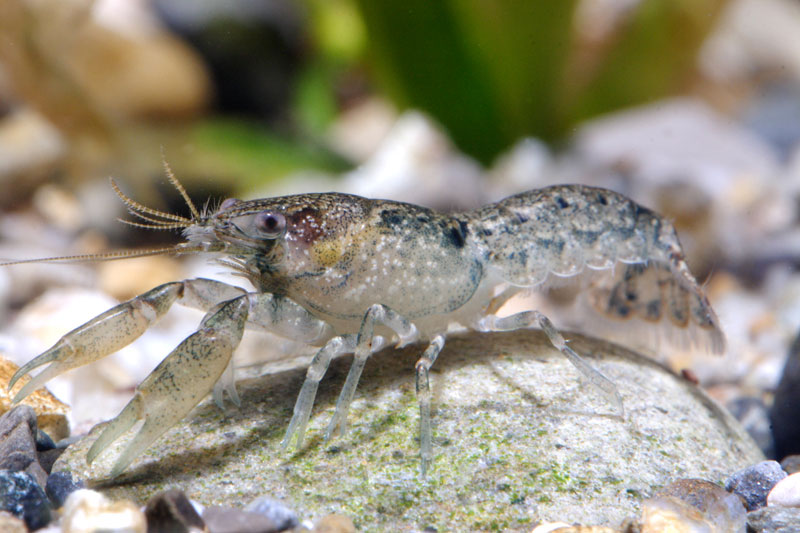
Angular Dwarf Crayfish Key Information
The Angular Dwarf Crayfish is a tiny aquatic marvel that comes in a variety of eye-catching colors. While specific details about Cambarellus lesliei’s coloration are limited, these miniature crustaceans often display a range of hues. They might sport shades of brown, tan, or olive, sometimes with subtle patterns or markings that help them blend into their surroundings. Some individuals may even show hints of blue or red, adding a splash of unexpected color to their diminutive frames. This color diversity makes each Angular Dwarf Crayfish unique and adds to their charm as aquarium inhabitants.
| Family | Cambaridae |
| Origin | Alabama and Mississippi, USA |
| Price | Varies, typically moderate |
| Common names | Angular Dwarf Crayfish, Dwarf Crawfish |
| Variants | Limited information available |
| Ideal tank size | 5-10 gallons |
| Water parameters | pH 6.5-7.5, temperature 68-75°F (20-24°C) |
| Lifespan | 1-2 years |
| Full size | Up to 1 inch (2.5 cm) |
| Natural environment | Slow-moving streams and still waters |
| Behavior | Bottom-dwelling, generally peaceful |
| Habitat preference | Well-planted areas with hiding spots |
| Aquarium decoration | Plants, driftwood, rocks for hiding |
| Ideal tank mates | Small, peaceful fish and shrimp |
| Fish to avoid | Large or aggressive species |
| Best foods/diet | Omnivorous – plant matter, detritus, small insects |
| Disease | Susceptible to common crustacean ailments |
| Sex-switch | No known sex-switching behavior |
| Gender Differences | Males may have larger claws |
| Care level | Beginner to intermediate |
| Breeding level | Intermediate |
Ideal Tank Mates for Angular Dwarf Crayfish
When considering tank mates for the Angular Dwarf Crayfish (Cambarellus lesliei), it’s important to choose species that are compatible with its peaceful nature and small size. Here are 10 ideal tank mates for the Angular Dwarf Crayfish:
Neon Tetra (Paracheirodon innesi)
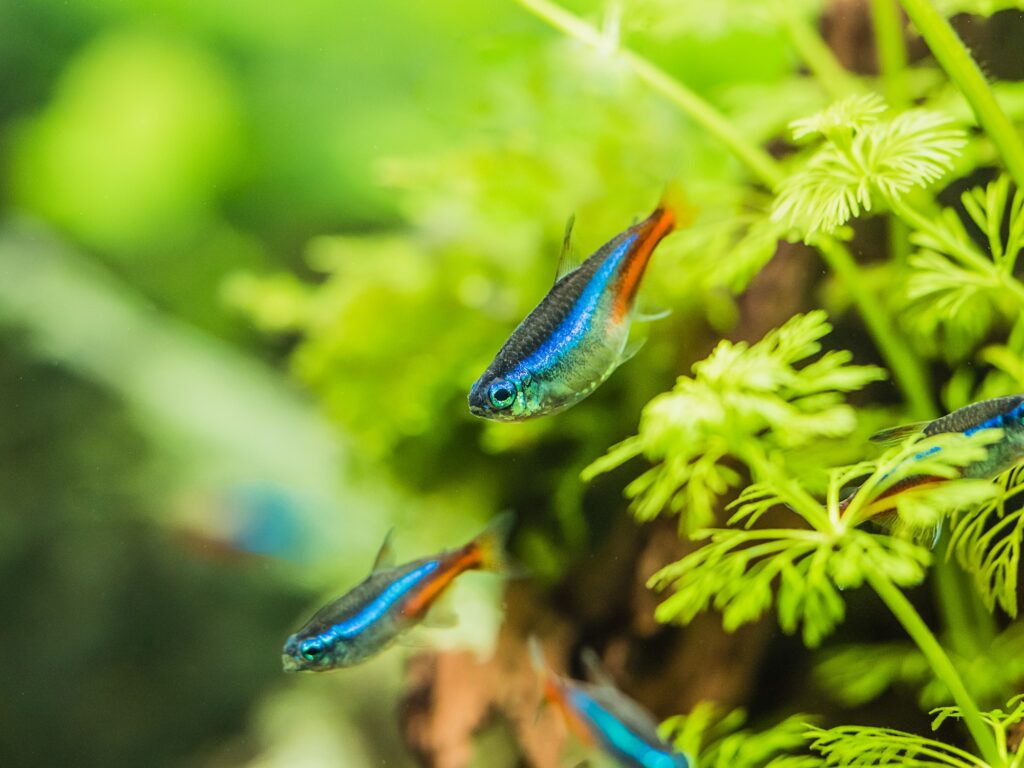
Neon Tetras are a perfect match for Angular Dwarf Crayfish due to their small size and peaceful temperament. These colorful fish swim in the middle to upper levels of the tank, leaving plenty of space for the crayfish to explore the bottom. Their vibrant blue and red coloration adds a beautiful contrast to the crayfish’s more subdued hues.
| Common/Market Names | Price Range | Care Level | Behavior | Life Span | Max Size |
|---|---|---|---|---|---|
| Neon Tetra | $2-$5 | Easy | Peaceful | 5-8 years | 1.5 inches |
Corydoras Catfish (Corydoras spp.)
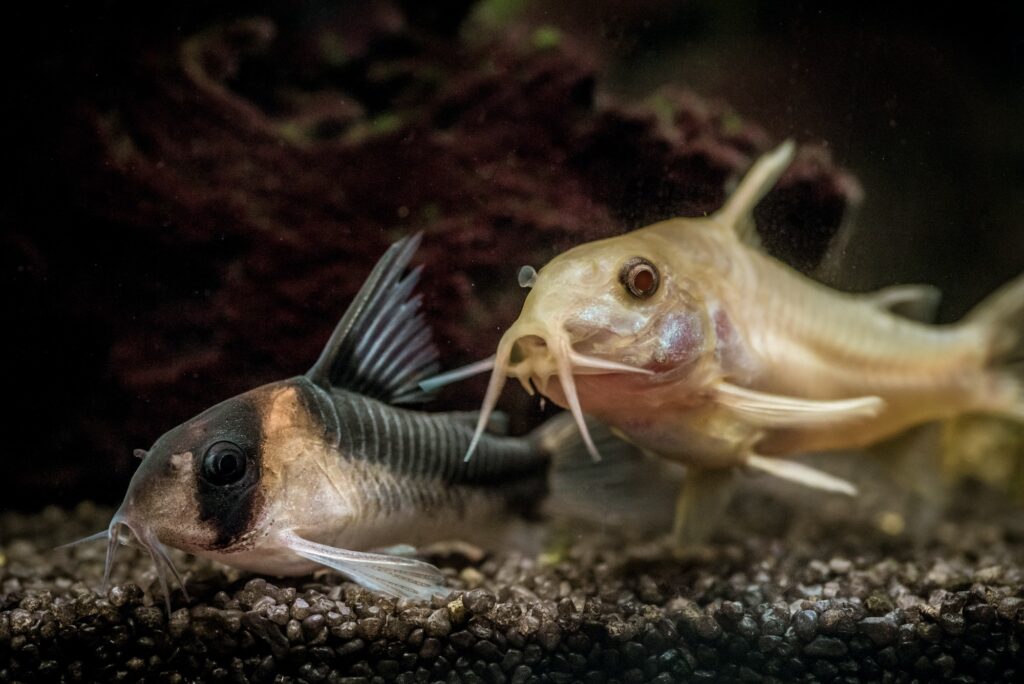
Corydoras Catfish are excellent bottom-dwellers that can coexist peacefully with Angular Dwarf Crayfish. These armored catfish have a similar lifestyle to the crayfish, scavenging for food on the substrate. Their hardy nature and gentle disposition make them ideal companions.
| Common/Market Names | Price Range | Care Level | Behavior | Life Span | Max Size |
|---|---|---|---|---|---|
| Cory Catfish, Corys | $3-$10 | Easy | Peaceful | 3-5 years | 2-3 inches |
Celestial Pearl Danio (Danio margaritatus)
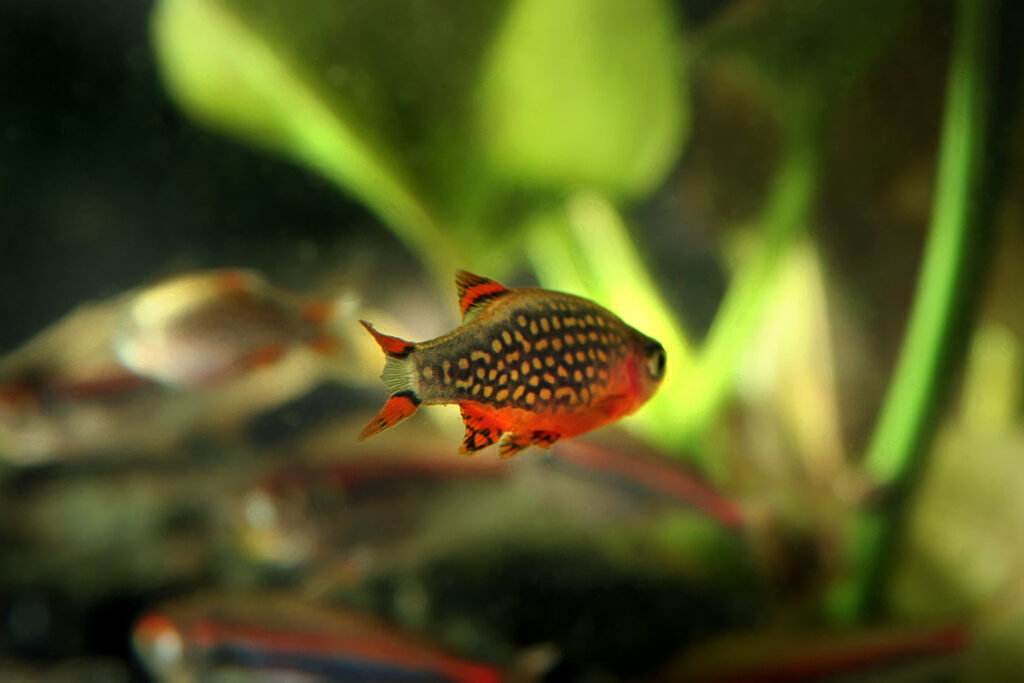
These tiny, colorful fish are a great choice for a tank with Angular Dwarf Crayfish. Their small size ensures they won’t bother the crayfish, while their active swimming in the upper levels of the tank provides an interesting contrast to the crayfish’s bottom-dwelling habits.
| Common/Market Names | Price Range | Care Level | Behavior | Life Span | Max Size |
|---|---|---|---|---|---|
| Galaxy Rasbora | $5-$10 | Moderate | Peaceful | 3-5 years | 1 inch |
Otocinclus Catfish (Otocinclus spp.)
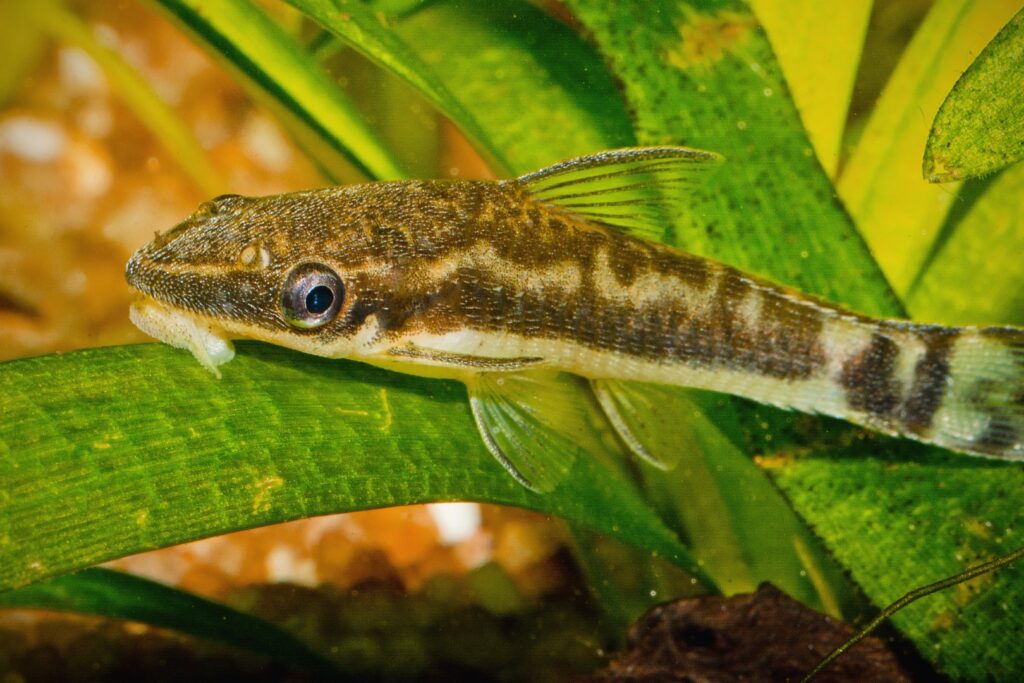
Otocinclus Catfish are peaceful algae eaters that can help keep the tank clean. Their small size and non-aggressive nature make them compatible with Angular Dwarf Crayfish. These catfish tend to stick to the glass and plants, avoiding conflict with the crayfish.
| Common/Market Names | Price Range | Care Level | Behavior | Life Span | Max Size |
|---|---|---|---|---|---|
| Oto Cat, Dwarf Sucker | $2-$5 | Moderate | Peaceful | 3-5 years | 2 inches |
Ember Tetra (Hyphessobrycon amandae)
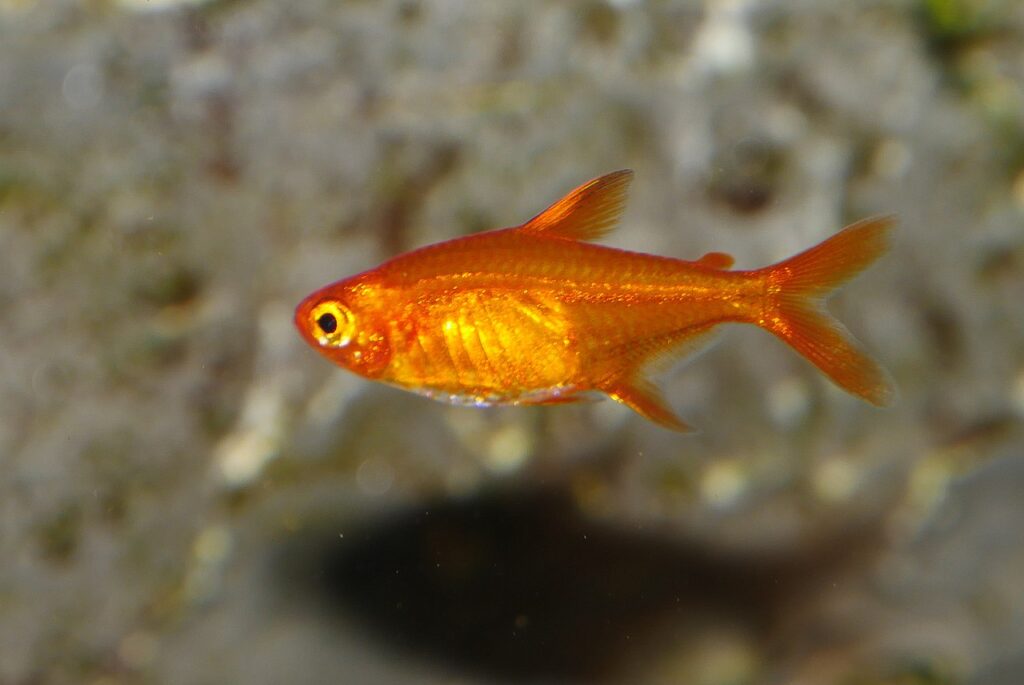
Ember Tetras are tiny, bright orange fish that add a pop of color to the aquarium. Their small size and peaceful nature make them excellent tank mates for Angular Dwarf Crayfish. These fish prefer the middle to upper levels of the water column, staying out of the crayfish’s territory.
| Common/Market Names | Price Range | Care Level | Behavior | Life Span | Max Size |
|---|---|---|---|---|---|
| Fire Tetra | $3-$6 | Easy | Peaceful | 2-4 years | 0.8 inches |
Harlequin Rasbora (Trigonostigma heteromorpha)
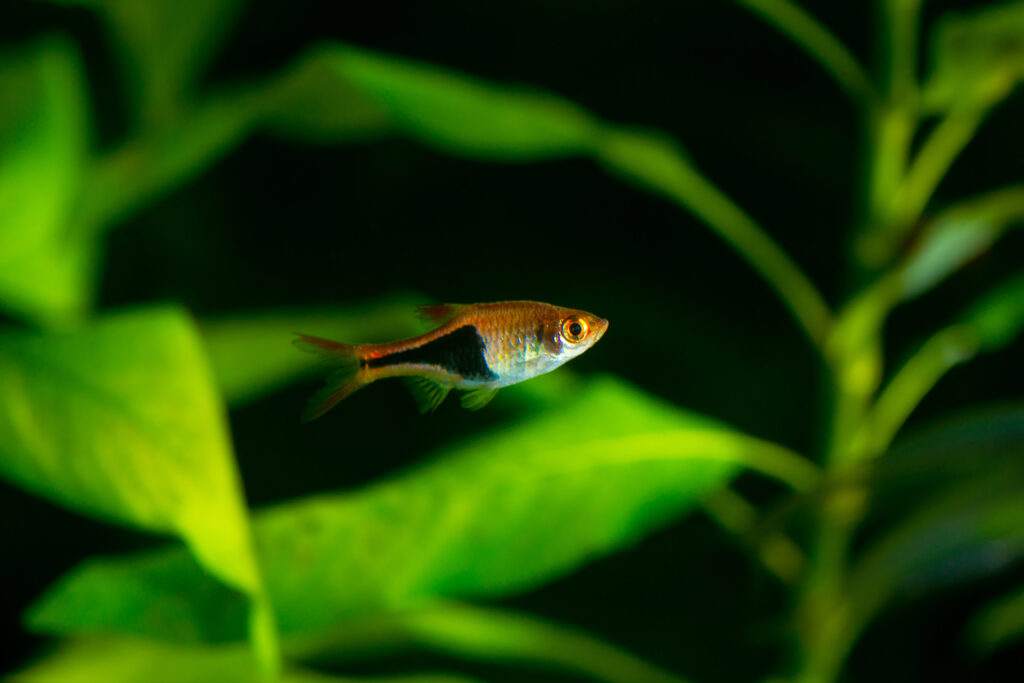
Harlequin Rasboras are peaceful schooling fish that can coexist harmoniously with Angular Dwarf Crayfish. Their distinctive triangular shape and copper-orange coloration provide visual interest in the upper parts of the tank, while their gentle nature ensures they won’t harass the crayfish.
| Common/Market Names | Price Range | Care Level | Behavior | Life Span | Max Size |
|---|---|---|---|---|---|
| Red Rasbora | $2-$5 | Easy | Peaceful | 5-8 years | 2 inches |
Pygmy Corydoras (Corydoras pygmaeus)
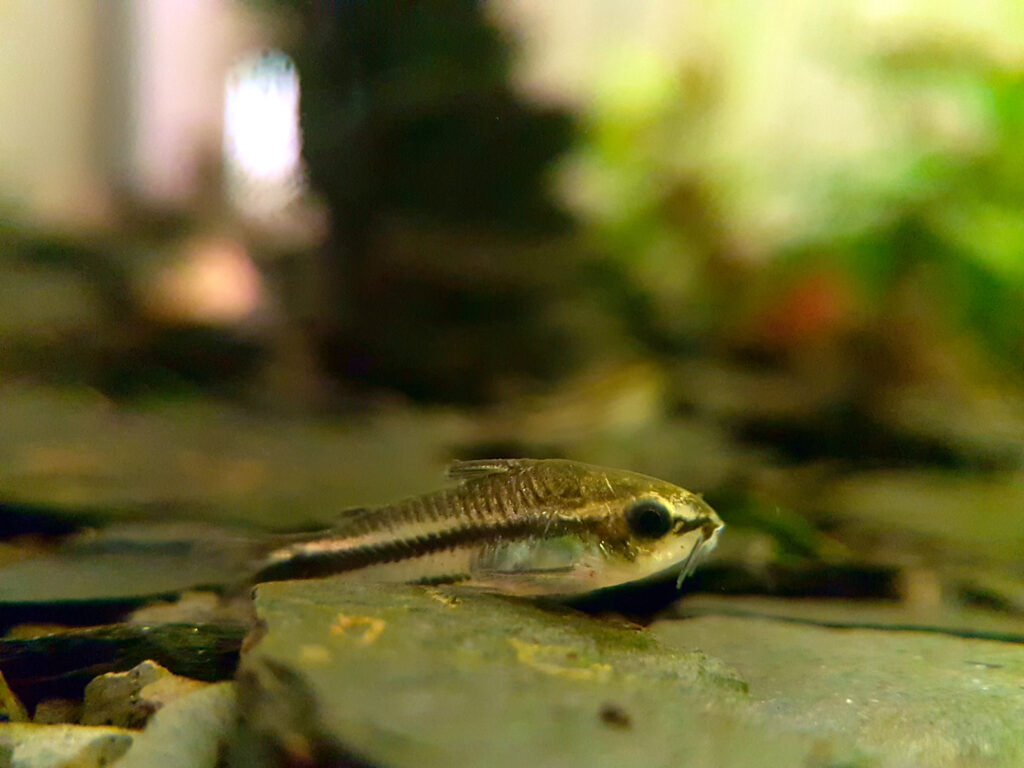
Pygmy Corydoras are miniature versions of their larger cousins, making them an excellent choice for smaller tanks with Angular Dwarf Crayfish. These tiny catfish share the bottom of the tank with the crayfish but are so small and unobtrusive that they rarely come into conflict.
| Common/Market Names | Price Range | Care Level | Behavior | Life Span | Max Size |
|---|---|---|---|---|---|
| Pygmy Cory | $3-$7 | Easy | Peaceful | 3-5 years | 1 inch |
Endler’s Livebearer (Poecilia wingei)
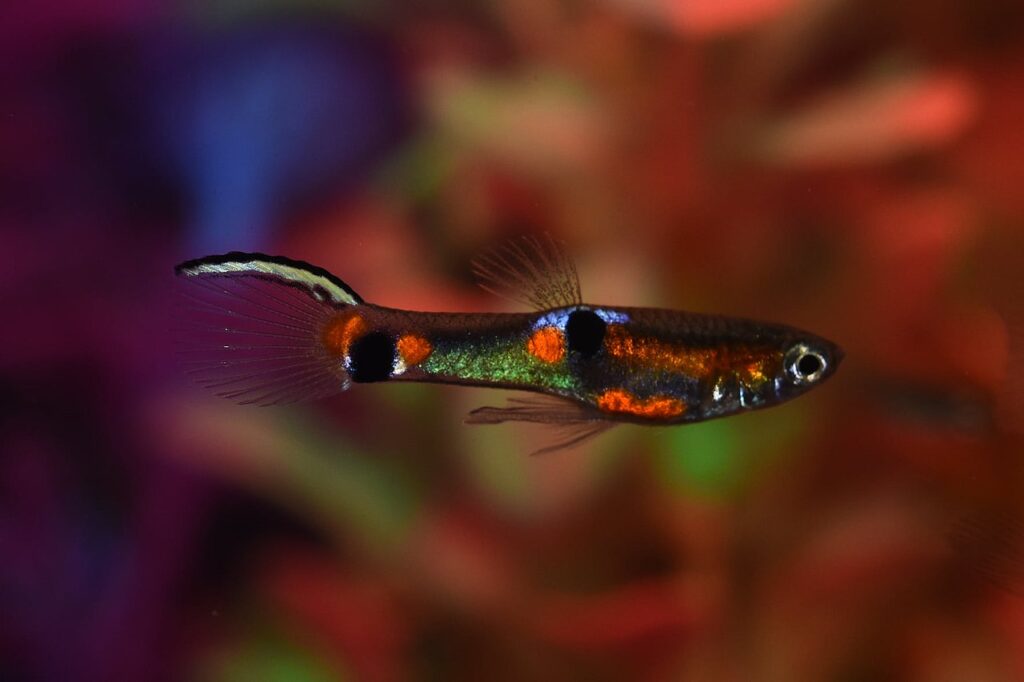
Endler’s Livebearers are small, colorful fish that can add life and movement to a tank with Angular Dwarf Crayfish. Their vibrant patterns and active swimming behavior provide an interesting contrast to the more sedate crayfish, while their small size ensures they won’t be a threat.
| Common/Market Names | Price Range | Care Level | Behavior | Life Span | Max Size |
|---|---|---|---|---|---|
| Endler’s Guppy | $3-$8 | Easy | Peaceful | 2-3 years | 1 inch |
Kuhli Loach (Pangio kuhlii)
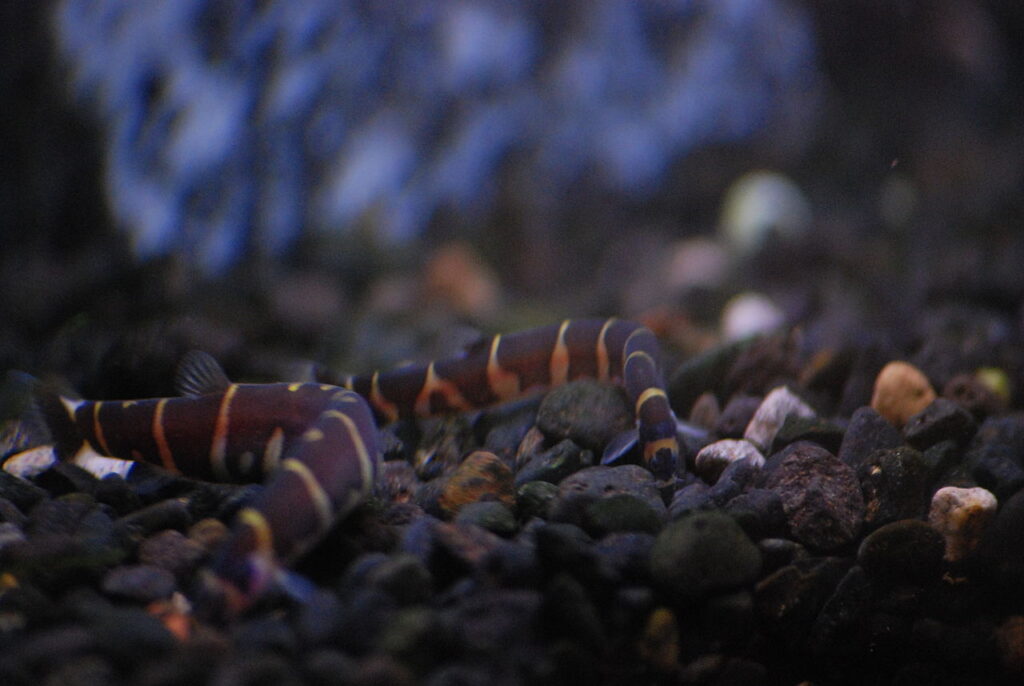
Kuhli Loaches are interesting, eel-like fish that can coexist with Angular Dwarf Crayfish. These nocturnal bottom-dwellers have a similar lifestyle to the crayfish but tend to hide during the day, reducing the chances of conflict. Their unique appearance adds diversity to the tank’s inhabitants.
| Common/Market Names | Price Range | Care Level | Behavior | Life Span | Max Size |
|---|---|---|---|---|---|
| Coolie Loach | $3-$7 | Moderate | Peaceful | 10+ years | 4 inches |
Chili Rasbora (Boraras brigittae)
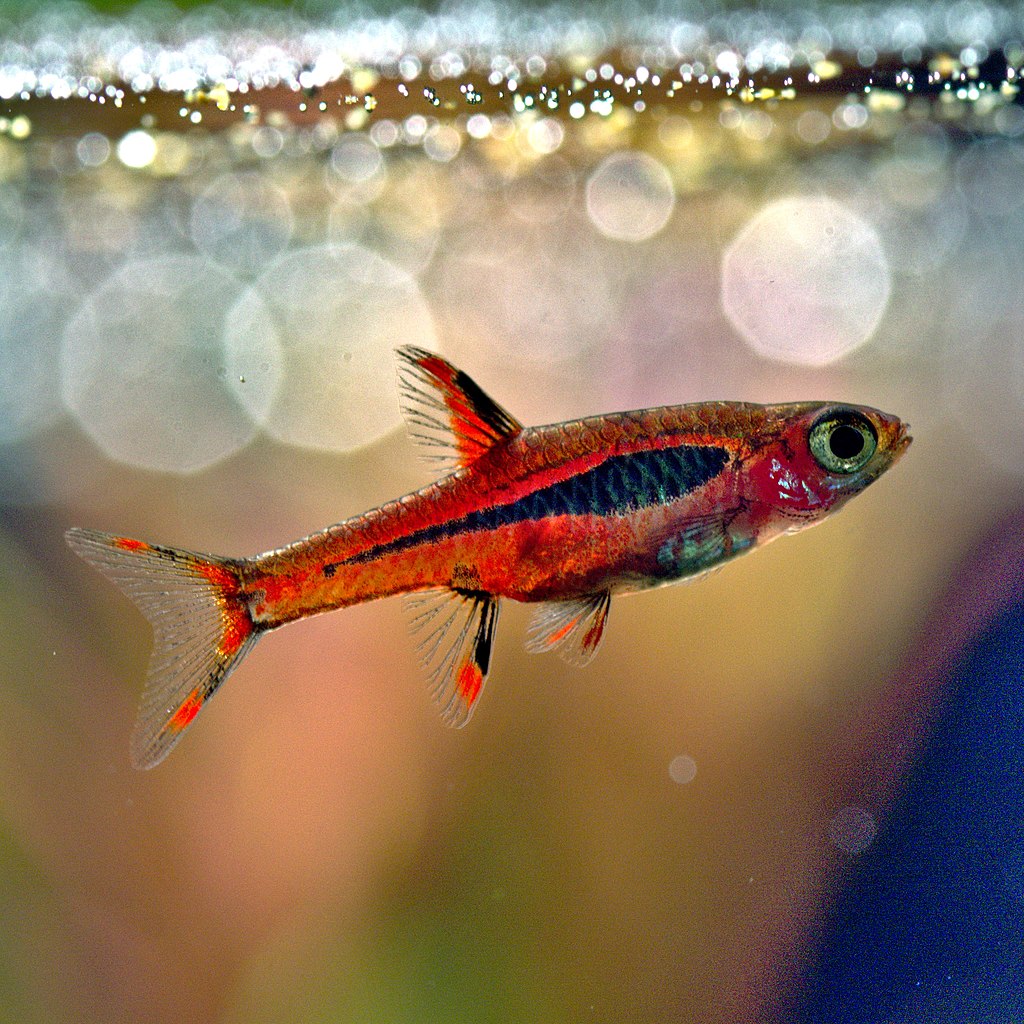
Chili Rasboras are tiny, bright red fish that can add a splash of color to a tank with Angular Dwarf Crayfish. Their diminutive size means they pose no threat to the crayfish, and their preference for the upper water levels keeps them out of the crayfish’s way.
| Common/Market Names | Price Range | Care Level | Behavior | Life Span | Max Size |
|---|---|---|---|---|---|
| Mosquito Rasbora | $3-$6 | Moderate | Peaceful | 3-5 years | 0.8 inches |
FAQs about Angular Dwarf Crayfish
How often do Angular Dwarf Crayfish molt?
Angular Dwarf Crayfish typically molt every 3-4 weeks when they’re young and growing rapidly. As they mature, the frequency decreases to about once every 1-2 months. The molting process is crucial for their growth and regeneration of lost limbs.
Can Angular Dwarf Crayfish live in a planted aquarium?
Yes, these crayfish can thrive in planted aquariums. They generally don’t damage healthy plants and may even help keep the tank clean by eating algae and detritus. However, they might occasionally nibble on delicate plants, so it’s best to provide them with hardy plant species.
Do Angular Dwarf Crayfish need a filter in their tank?
While these crayfish are relatively hardy, a filter is still recommended to maintain good water quality. A small sponge filter or low-flow HOB filter is suitable for their tank. Ensure the filter intake is covered to prevent the crayfish from getting stuck.
How many Angular Dwarf Crayfish can I keep in a 10-gallon tank?
A 10-gallon tank can comfortably house 3-5 Angular Dwarf Crayfish. However, it’s important to provide plenty of hiding spots and territory for each crayfish to reduce potential conflicts.
Will Angular Dwarf Crayfish eat fish eggs?
If given the opportunity, Angular Dwarf Crayfish may eat fish eggs they come across. If you’re planning to breed fish in the same tank, it’s best to separate the crayfish or provide ample protection for the eggs.
How can I tell if my Angular Dwarf Crayfish is stressed?
Signs of stress in these crayfish include hiding more than usual, loss of appetite, aggressive behavior, or attempting to climb out of the tank. Rapid movement of their swimmerets (small appendages under the tail) can also indicate stress.
Do Angular Dwarf Crayfish need special lighting?
These crayfish don’t have specific lighting requirements. However, a standard aquarium light on a regular day/night cycle can help maintain their natural behavior patterns and benefit any live plants in the tank.
Can Angular Dwarf Crayfish live in brackish water?
No, Angular Dwarf Crayfish are freshwater species and cannot tolerate brackish conditions. They should be kept in freshwater aquariums only.
How do I acclimate Angular Dwarf Crayfish to a new tank?
Acclimate them slowly by floating their transport bag in the new tank for about 15 minutes to equalize temperature. Then, gradually add small amounts of tank water to their bag over the course of an hour before gently releasing them into the tank.
What should I do if my Angular Dwarf Crayfish loses a claw?
Don’t worry if your crayfish loses a claw. They can regenerate lost limbs over time through the molting process. Ensure good water quality and proper nutrition to support their regeneration.


